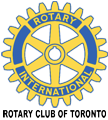Toronto Moving Services | Moving and Storage | Toronto Movers
- Full Service Moves
- Residential
- Commercial
- Institutional
- Estate
- Personal Consultation
- Testimonials
- Self Service Moves
- You Pack We Move
- You Pack We Load
- We Pack You Move
Packing Tips for Corporate / Institutional / Commercial Moving Clients
All packing should be completed prior to the actual move. All cartons should be sealed - two strips of tape on the bottom, and two on top;
Desk contents should be packed, and desk drawers should be locked; this will permit desks to be turned on end to negotiate doorways, etc., as required;
| All furniture items should be labeled, this being most important, with the label in proper view, identifying same as to name, proper destination and placement. It is important to use the latex labels as these are made specifically not to hurt the finish of the furniture, as well as being easy to remove, upon completion of the move. |
Labeling would also apply to smaller items such as garbage cans, recycle bins, floor mats, kitchen appliances (e.g. microwaves) and other kitchen contents that are not being wrapped and boxed for safe transport.
All cartons, no matter what the content, should be labeled - on three sides - to identify the owner, contents and location.
If stairs are involved in your relocation, all file cabinet drawer contents should be packed in proper cartons - generally the two cubic ft office moving cartons - which is a manageable carton for you when packing and manageable as well for the mover to carry / stack;
If your relocation does not involve stairs, but rather will be an internal move on the same floor, or will be moved with elevator assistance, but still staying within the same building, lateral file cabinets up to five levels high or less, can be moved with the bottom two drawer contents left intact; but the cabinets must be fully locked. Cabinets higher than five drawers must be completely unpacked and must be moved empty with all drawers locked. Keys to file cabinets should be placed in an envelope and same should be taped to the top of the individual cabinet.
| The older type file cabinets can be moved with contents intact but it is imperative that the cabinet drawers be locked before the cabinet is moved. If the cabinet cannot be locked, then the cabinet should be completely unpacked and contents placed into the proper carton. |
All bookcases should be packed; shelves should be removed numbered and taped together and same labeled as well. The shelf pegs should be placed into an envelope, and taped to the top of the unit;
This would also apply to all supply and storage cabinets, which should be completely unpacked, and the key (if there is one) placed into an envelope and taped to the top of the cabinet.
Artwork should be removed from walls, and properly wrapped (bubble wrap provides a good protection for glass fronted pieces) and same labeled as to new destination. Bubble wrap should be sealed with masking tape to permit easier removal when ready to be unwrapped and rehung.
Bulletin boards can also be wrapped, but normally do not require boxing.
| Computer equipment would normally be bagged, bubble wrapped and all components placed into an individual double wall computer case, to keep all components together, as well as being properly protected during the relocation. |
When taping doors on furniture items, it is imperative that the correct tape is used; this would be either masking tape or painters tape. If the standard clear or dark tape is used, the adhesive is too strong, and will damage the finish of the piece when the tape is removed.
Hanging garments and locker contents should also be packed, and any loose coat hangers should be taped together; If there is a considerable amount of hanging clothing, wardrobe containers would be provided to enable all garments to be relocated in a hanging yet secure position. The wardrobes should also be labeled as to name, floor and room.
Consolidated moving & storage limited will relocate living or artificial plants - however living plants should definitely not be watered for at least two days prior to the relocation; Smaller ones will be packed into double wall cases to permit easier movement and help to shield the plant/leaves during the relocation.
| Large photocopiers can be relocated however, if same is a leased piece of equipment, the owner should be contacted prior to any relocation, to see if the unit must be moved by the supplier - lease contracts would also provide this important information. |
To ensure a smooth and uninterrupted relocation, and if the facilities do have elevator access, it is best if dedicated elevator service is available at both locations; this would also apply to loading dock facilities (if there is one) both at the original location and also at the new location.
Lastly, and most important, a schematic drawing should be provided for proper placement and setup of all items when same arrive at the new location.
The above "tips" are based on many years of packing, moving and storage relocations; However, there are always questions that pop up; the answer should be as easy as just asking your consolidated move co-coordinator the question.







